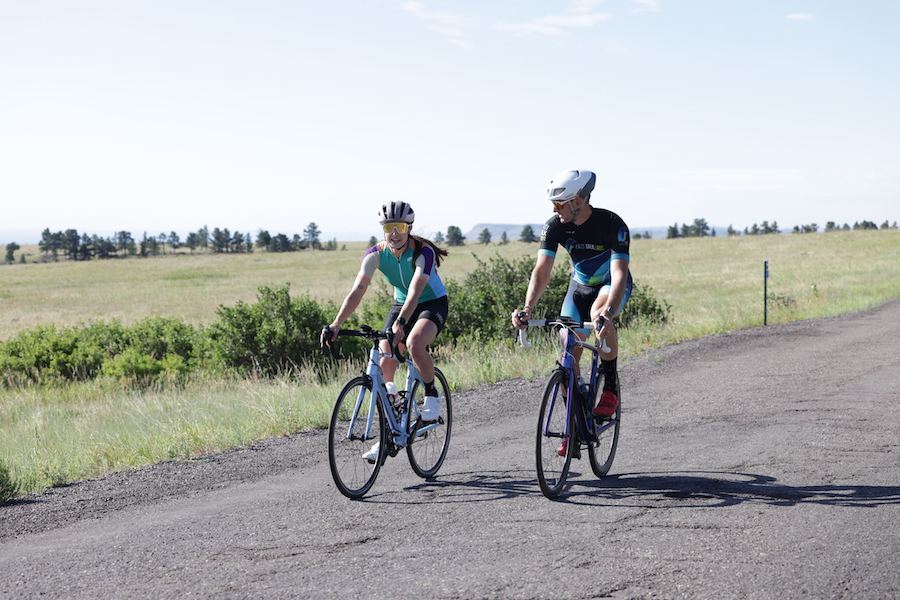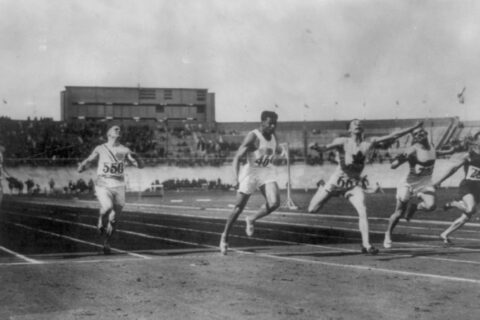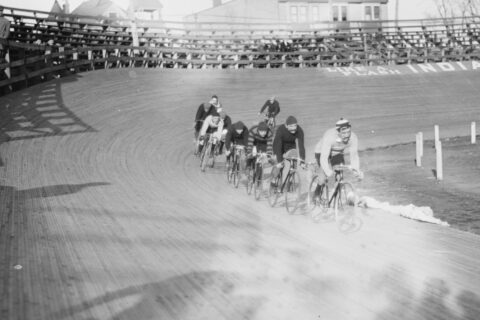Why does an athlete seek your help as a coach? It’s probably because they have a goal they feel incapable of achieving without specific and focused help from someone who knows what they are doing. Without a coach, most athletes put in endless hours of sweating without a well-defined purpose. They simply do what they’ve been told works, hoping it will produce the desired outcome—a high-performance race result. It seldom happens that easily.
Effective training always comes down to preparing the athlete to achieve a specific goal. Most athletes need help defining that goal. They often start with vague thoughts about something they’d like to achieve. As a coach you’ve learned through countless federation classes that a goal is an outcome that is specific, measurable, realistic, and timely. Without clear goals, the athlete is just accumulating hours, miles, and TSS (Training Stress Score). Having a well-defined goal and keeping it foremost in the athlete’s mind for days, weeks, months, and even years is a critical part of race preparation—and a big part of your job as a coach. But your role as a coach can only begin when the goal is given a definitive shape.
RELATED: Check Out Our Sport Psychology Pathway
Developing an individualized performance plan
A goal without a plan is only a wish. A wish cannot keep an athlete focused on an outcome. They must have in mind a well-defined goal with an accompanying plan every day. You, as the coach, in conjunction with your athlete, must give the goal a plan that drives their preparation for high performance. The plan answers the questions:
- What is the athlete going to do?
- When are they going to do it?
- Why are we doing these things?
Let’s examine the path a coach takes in developing that plan for an athlete.
Race-specific limiters
Here’s the starting point: There is something standing between the athlete and race success—the goal. What is it? I propose that the obstacle is a weakness, or multiple weaknesses. But it’s not just a generalized weakness; it’s a race-specific weakness.
Every athlete has weaknesses. No one is perfect and always ready to race at their very best. But notice that I’m not talking about general weaknesses here; I’m talking about “race-specific” weaknesses. This is a weakness that is preventing the athlete from achieving the goal. For example, if the race course is hilly and the athlete is not very good on hills, then this is a race-specific weakness. If the course, however, is flat, poor hill performance is still a weakness, but it is not a race-specific weakness. I call these race-specific weaknesses “limiters.” A limiter is a weakness standing between the athlete and their success in the race. Your job as the coach is to determine what the athlete’s limiters are and then go about “fixing” them.
While this task goes right to the heart of coaching an athlete, determining and fixing a limiter is no simple task. It takes a lot of digging into the athlete’s background to come up with their weaknesses. It starts with coach-athlete conversations about past training and racing experiences. The athlete can give you a general sense of how they physically do things such as climbing hills, pacing, accelerating, going for long durations, and maintaining steady efforts. But there’s more to it than that.
Physiological limiters
More than likely, your deep dive into the athlete’s background will reveal some additional weaknesses that need addressing, such as sleep or nutrition. But you must still determine what is physiologically holding the athlete back and producing limiters. This is likely to require some measurement of important indicators of performance. Conversations about (and data from) past races are a good starting place for this. But you are also likely to need past training data along with current field tests or even lab tests (such as INSCYD Testing) to get a good sense of the athlete’s physiological limiters. The first few weeks of following a new training plan may also provide you with a lot of information about the athlete’s weaknesses.
Psychological and lifetime limiters
Could the limiter be something not so easily defined? Certainly. For example, mental limiters are a lack of confidence and poor focus. There are lots more that could fall into this category. Then there are also other hard-to-define factors, such as lifestyle, nutrition, training and racing equipment, training consistency, limited training time, lack of friends and family support, work-related stress, physically demanding work, a propensity to overtrain, frequent illness or injury, and poor environmental training conditions (altitude, terrain, and weather). This is only a short list of the possible factors.
You may determine that there is a single limiter that overshadows all other physical racing qualities in limiting the athlete’s performance. Inadequate sleep is a good example of this because fitness and adaptation depend on the hormones that are released during sleep. So if an athlete is getting inadequate sleep due to an overly full schedule of daily activities, this may well be the primary limiter that needs attention.
Determining the athlete’s strengths
Of course, the athlete also has strengths. These must not be overlooked as they also play a critical role in goal achievement. While working to fix the limiters you must not neglect the athlete’s strengths. However, it’s far easier to maintain a strength than it is to fix a weakness. Both coach and athlete need to accept that limiters stand in the way of the athlete’s success and must therefore receive greater attention.
What does it mean to “fix” a limiter? That’s a difficult question to answer as it depends a great deal on what the limiter is. Some are relatively easy to fix. An athlete with poor aerobic endurance as a limiter primarily needs more low-intensity training time. But for the athlete with poor hill-climbing ability, the fix may involve several stages of development such as strength training, equipment changes, and hill work. And, of course, this is all taking place while the athlete is also working to maintain their strengths. It’s a juggling act for the coach and the athlete.
Balancing priorities over a season of racing
Your athlete may have two or three A-priority races in their season, not just one. This makes things more tricky as now you have to compare their strengths and weaknesses with the unique demands of multiple events. There may be a need to identify and focus training on different strengths and limiters and at different times in the season. The closer two or more of their A races are on the calendar makes the decision as to what needs to be the focus of training more difficult. Of course, it may be that one of the A races is the highest priority event of the season. That allows you to place more emphasis on strengths and limiters specific to that event during the season.
I admit that there are many troubling nuances inherent to this method of training athletes. You not only have to determine the athlete’s strengths and limiters, but you also have to decide what you do about them. This is when the hard work begins for both you and the athlete. For you it raises a few questions:
- What does the athlete need to do to improve limiters?
- What must be done to maintain race-specific strengths?
- What should the mix of workout types be and how best do I balance them?
- How will I know when the athlete progresses to the next level of training for a specific limiter?
- How will I know when the limiter is developed to an acceptable level?
Of course, if the athlete has chosen races that match up well with their strengths, meaning there are fewer limiters, then your job is much easier. That seems to seldom be the case, however.
Good plans are dynamic and patient
The athlete can’t be physiologically forced to become fit on some sort of artificial schedule. The biological changes that take place in the process take some time, and they proceed at different rates for different athletes.
Positive changes may overlap in your plan for the athlete’s development, but they can’t be rushed. This requires you to stay in close contact with the athlete to determine their unique rate of progression. This often requires changes in the training plan and the race plan to accommodate a slower than expected response to training. The plan must also be dynamic, and you need to be willing to maintain a close feedback relationship with the athlete relative to it. This raises the topic of “periodization on demand.”
It’s rarely feasible to have the athlete follow a rigid plan by assuming that their progress will neatly proceed along a projected curve. While determining and fixing limiters is a very effective way to coach an athlete, it puts great pressure on you to make short-term decisions about training progression. It’s far easier to simply write a long-range training plan and then follow it throughout the season. But that’s not nearly as effective.
Always keep in mind that the athlete trusts you to prepare them for the event. Your attitude while approaching race day is a critical part of the athlete’s readiness to race. Not only must the athlete get to the start line feeling positive, you must also visibly and audibly project a sense of preparedness. This cannot be faked. If it is, it is likely to come back to haunt you.
Be honest with your athlete as you approach race day. If you have reservations about how well-prepared the athlete is, share that feedback with the athlete. But also be prepared to offer alternative strategies that may improve performance on the day. Of course, these are things you should have prepared the athlete for in their preparation—not last-minute changes.





